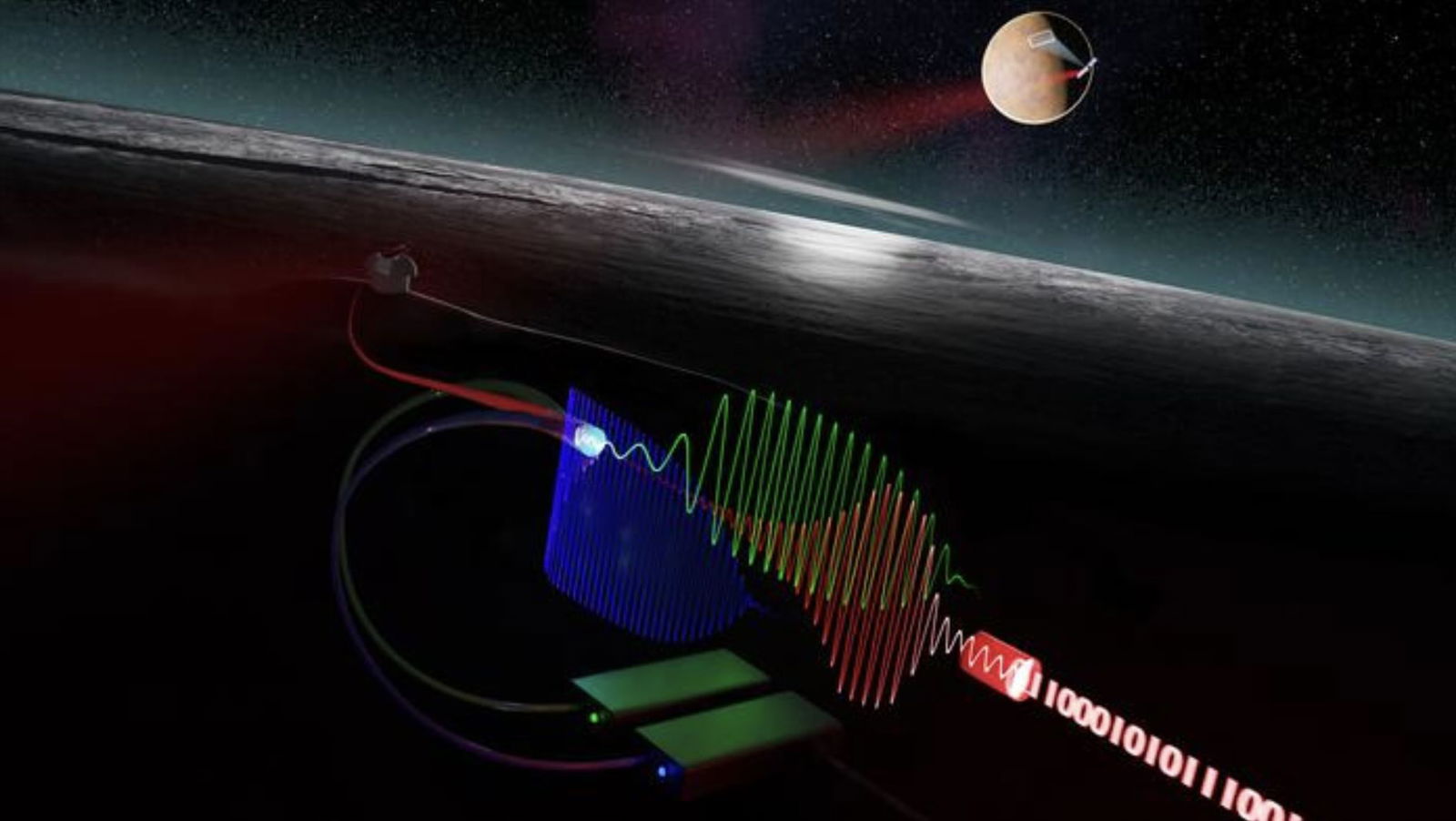Swedish scientists report a new breakthrough in technology that could transform optical communication in deep space, according to recently published research.
In a study led by a team at Chalmers University of Technology in Sweden, researchers have developed a silent amplifier and ultra-sensitive receiver that can facilitate high-fidelity transmissions over vast distances, showing promise for long-distance space communication.
Optical Communication Through Deep Space
One major criticism of the search for extraterrestrial intelligence has been its reliance on radio transmissions—a technology humans are beginning to phase out after just over a century. Radio signals degrade significantly over the vast distances needed for interplanetary communication. With humanity now sending probes into deep space and aiming to reach Mars, the need for effective long-distance communication is greater than ever.
Optical communications experience far less signal degradation over large distances. However, the technology still faces challenges: the light carrying these signals dims as it travels through space. As a result, Earth-based receivers need extreme sensitivity to accurately detect these signals after their cosmic journey.
New Tools for Deep Space Communication
“We can demonstrate a new system for optical communication with a receiver that is more sensitive than previously demonstrated at high data rates. This means that you can get a faster and more error-free transfer of information over very long distances, for example, when you want to send high-resolution images or videos from the Moon or Mars to Earth,” said Peter Andrekson of Chalmers University in Sweden, co-author of the study.
Professor Andrekson’s team addressed the problem of diminishing light by adding an optical amplifier to the receiver. Optical signals, like all light sources, diffuse as they travel, similar to how a flashlight beam spreads out in the dark. Over long distances, this light can become so diffused that it is indistinguishable from the electronic noise generated by the receiver itself. The amplifier developed by Chalmers effectively recycles the signal, much like a flashlight beam hitting a reflective surface instead of dissipating into darkness. Andrekson and his team had previously demonstrated such a device, but it faced practical challenges for real-world applications. Now, the Chalmers team has found a way to make this concept feasible for long-distance space communication.
Building Tomorrow’s Optical Communications Receiver
Space probes must be compact and efficient, with every component adhering to strict size and power constraints. This requirement poses challenges for optical communication systems that need powerful amplifiers and sensitive receivers.
The Chalmers team’s solution was to shift much of the complexity to the Earth-based receiver. Their noiseless transmission system uses three light frequencies, with the receiver generating two of them, leaving the transmitter responsible for only one. This simplified system demonstrated exceptional sensitivity during practical tests.
“This phase-sensitive optical amplifier does not, in principle, generate any extra noise, which contributes to a more sensitive receiver, and that error-free data transmission is achieved even when the signal’s power is lower. By generating two extra waves of different frequencies in the receiver, rather than as previously done in the transmitter, a conventional laser transmitter with one wave can now be used to implement the amplifier. Our simplification of the transmitter means that already existing optical transmitters on board satellites and probes could be used together with the noise-free amplifier in a receiver on Earth,” explained lead author Rasmus Larsson of Chalmers University.
A Potential Solution to NASA’s Challenges
From Voyager 1 to Europa Clipper, NASA operates numerous probes that push the boundaries of human knowledge about the cosmos. However, despite the advanced instrumentation on these spacecraft, NASA still faces significant limitations in the volume of data it can receive. The Chalmers team sees their work as a potential solution to this “science return bottleneck,” aiming to unlock a wealth of cosmic data. Their research will continue with additional Earth-based tests and future satellite communication experiments.
“NASA talks about ‘the science return bottleneck,’ and here, the speed of the collection of scientific data from space to Earth is a factor that constitutes an obstacle in the chain. We believe that our system is an important step toward improving data transmission efficiency for deep space exploration.”
The paper “Ultralow-Noise Preamplified Optical Receiver Using Conventional Single-wavelength Transmission” appeared October 28, 2024 in Optica.
Ryan Whalen covers science and technology for The Debrief. He holds a BA in History and a Master of Library and Information Science with a certificate in Data Science. He can be contacted at ryan@thedebrief.org, and follow him on Twitter @mdntwvlf.

